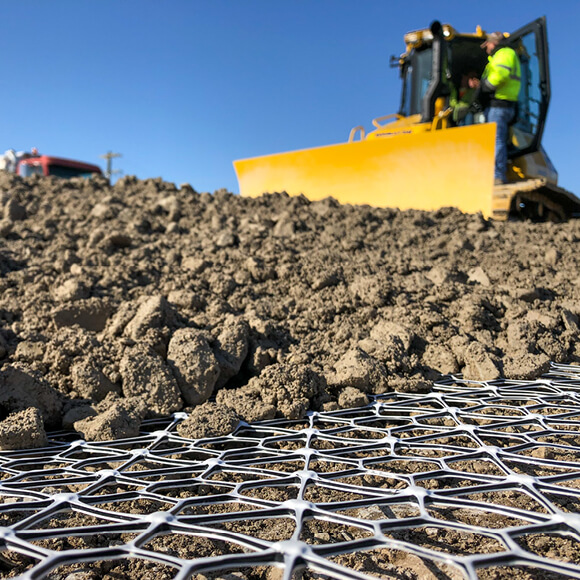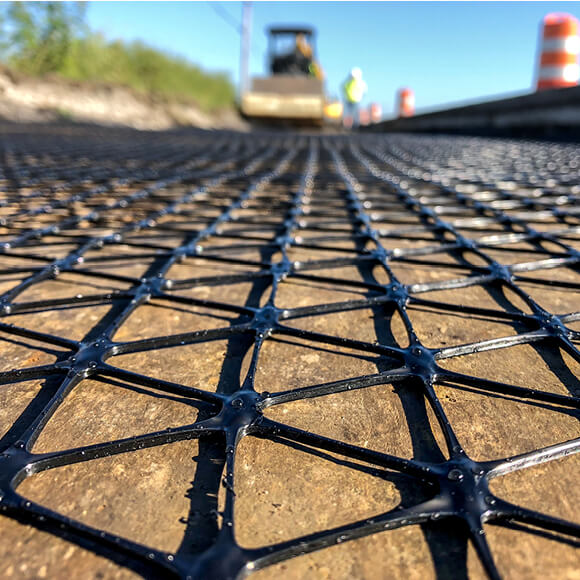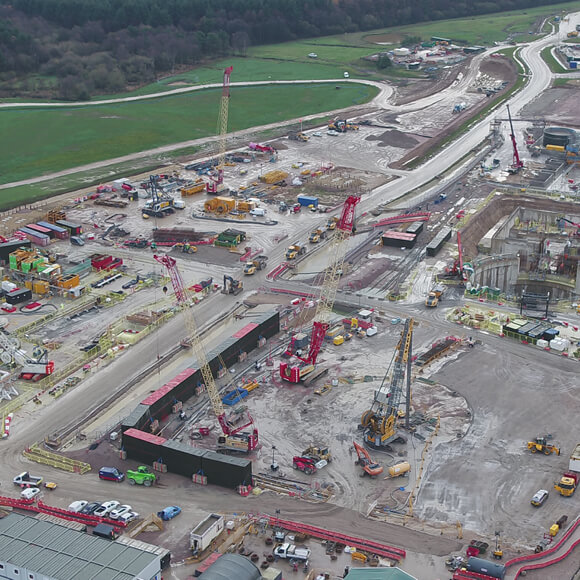
Design stabilised working platforms with Tensar
A unique design approach & software specifically for working platform stabilisation
Safety is critical when using mobile cranes, piling rigs and other heavy plant machinery on construction sites, particularly over weak and variable ground. Storage areas for plant machinery and materials on site need to be smooth, clean and free of ruts, so safe working platform design is essential.
Tensar geogrids can be incorporated into the granular material to stabilise working platforms and increase bearing capacity, limiting surface deformation and settlements. Strengthening the granular layer reduces the working platform thickness. By minimising the volume of fill required, costs, time and embodied carbon are reduced, contributing to sustainability objectives.
For sites that require enhanced stability, a piling mat can be designed using Tensar geogrids, ensuring that the ground can safely support heavy machinery, further enhancing the safety and efficiency of construction operations.
Need a working platform design?
Tensar’s design team can produce a free-of-charge “Application Suggestion” to illustrate what Tensar can achieve and how much value can be added to your project.
Request Design Assessment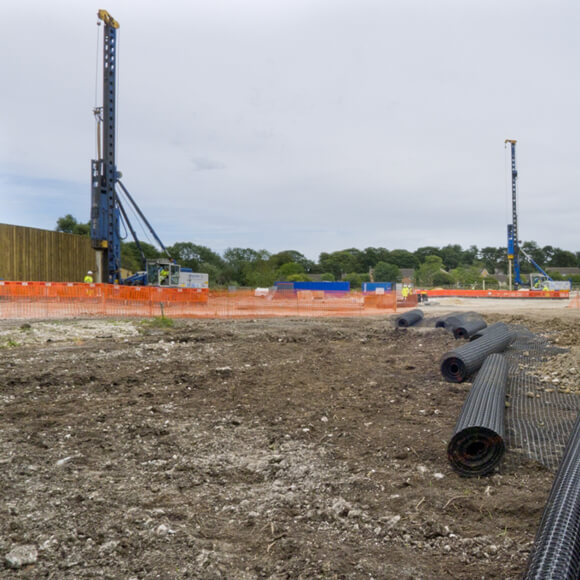
How does Tensar geogrid improve working platform strength?
The interlocking mechanism and particle confinement that develops between the aggregate and the Tensar geogrid prevents lateral movement of the granular material. This creates a mechanically stabilised working platform design that significantly increases bearing capacity and controls differential settlement.
Need a Tensar design for your working platform project?
Tensar’s design team can produce a free-of-charge “Application Suggestion” to illustrate what Tensar can achieve and how much value can be added to your project.
Request Design Assessment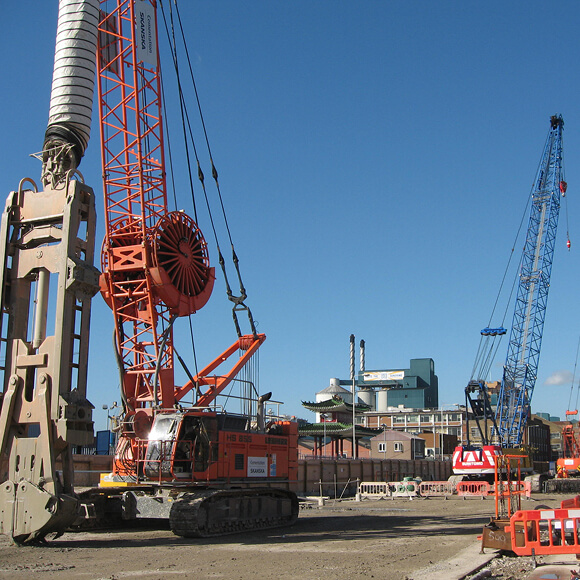
A strong working platform ensures stability for heavy machinery
A safe working platform design provides a stable surface to support piling rigs, allowing this heavy machinery to operate safely when installing various pile foundations. All working platforms consist of a layer of granular fill material that is sufficiently wide, thick, and stable to safely support the operation of piling rigs and the movement of this equipment around the site.
However, the exact design of a working platform will vary depending on the loading conditions and requirements of the project.
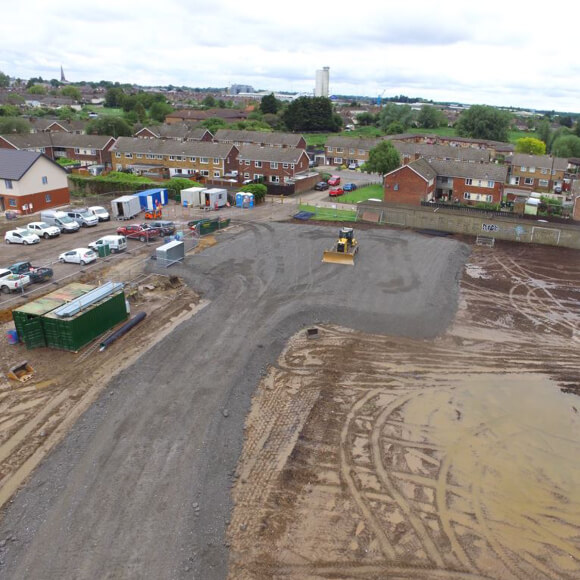
The importance of site investigation in designing working platforms
Working platform design should be carried out by a competent geotechnical engineer. The design depends on ground conditions and requires sufficient ground investigation data, including results from triaxial testing. The working platform thickness depends on subgrade strength, the platform materials and, of course, the expected construction loads. It is important to have a platform that can provide sufficient bearing capacity for safe working whilst also being economical and straightforward to construct.
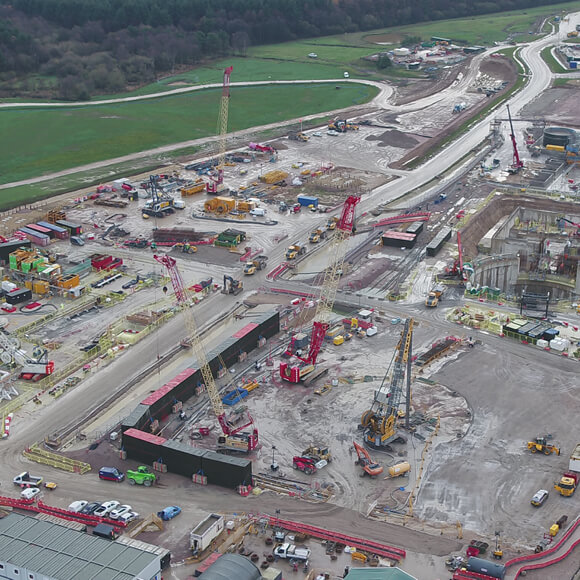
Design a working platform with Tensar’s T-Value Method
Tensar’s T-value design method enables a more accurate assessment of the positive effect of stabilising geogrids on the bearing capacity of granular working platforms. Applicable to a range of working platform materials in different ground conditions, the T-value method enables designs with or without geogrids to be compared - including for subgrade soils with very low shear strength. It can also be applied to surface and shallow embedded foundations with dry or saturated granular layers.
For the first time, the full benefits of soil-stabilising geogrids can be incorporated consistently in designs for working platforms. The T-Value method delivers verifiable designs that can reduce working platform thickness and improve bearing capacity, cutting construction costs by up to 30% and reducing a platform’s carbon footprint by up to 40%.
The benefits of soil stabilisation for working platform design
Using Tensar geogrids to create a mechanically stabilised aggregate layer (MSL) has significant benefits over non-stabilised aggregate working platforms:
- Increased bearing capacity: The mechanically stabilised layer has an increased bearing capacity, creating a safer and more reliable piling mat design for the operation of heavy plants and machinery.
- Reduced layer thickness: The aggregate layer can be reduced by more than 50% with no performance loss. This also means that less subgrade soil needs to be excavated and disposed of.
- Lower quality and recycled aggregate types: With increased layer performance, the use of a Tensar MSL may enable the use of lower quality fill materials such as reclaimed aggregates.
- Long-term cost savings: Less excavation and use of reclaimed aggregates can reduce construction costs and site CO2 emissions.





_1.png)

